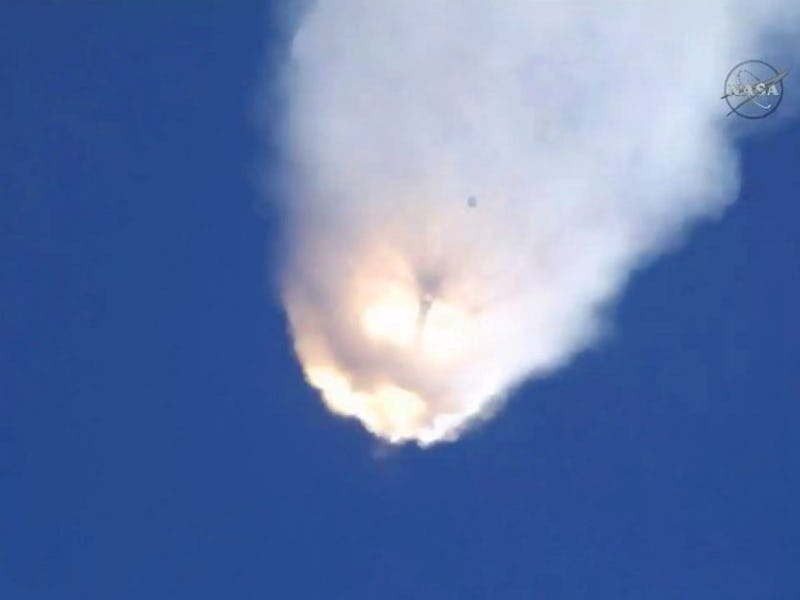The SpaceX Explosion May Have Detonated Elon Musk's Supply Chain
What’s next for Elon Musk and his company?

On June 28, we saw SpaceX’s Falcon 9 rocket explode in spectacular fashion just two minutes and 19 seconds into its supply mission to the International Space Station. For three weeks afterward, the world has been waiting to get some answers as to what happened and, yesterday, Elon Musk finally provided an aggressively mundane “initial assessment.” Musk blamed the explosion on a broken piece of steel called a strut, which is just two feet long and an inch wide, but stopped short of explaining the moral of the story, which is that commercial space travel has a supply chain problem.
If the rocket had gone up, we would have witnessed the third attempt by SpaceX to successfully bring it back down. But, as it stands, SpaceX lost face and about 4,000 lbs of cargo.
The faulty strut takes on — or rather, is supposed to take on — 10,000 pounds of force, even though the actual launch only requires it to withstand 3,500 pounds of force. But SpaceX’s investigation of the explosion found that some of the struts maxed out at 2,000 pounds. Musk refused to name the outside supplier that manufactured and sold the struts to SpaceX, but did tell reporters the strut was “not something that should ever have failed at this force level.”
The strut that’s presumed to have broke would normally play a role in holding helium bottles in place in the liquid oxygen tank. The Falcon 9 rocket burns oxygen as fuel as it flies up, and the oxygen needs to be replaced so that pressure in the tank remains stable — thus why the helium is needed. But during launch, the strut seems to have snapped, causing helium to leak into the oxygen tank and create too much pressure. Everything happened in the span of just 0.893 seconds. The end result is, well, you can see for yourself.
The immediate impact of the explosion was bad: Some important biomedical experiments were lost, and SpaceX probably lost hundreds of millions of dollars in revenue. The August 3rd launch of the climate satellite Jason-3 had to be postponed as well. But there are longer-term ramifications for both SpaceX and its vendors. Will whoever sold the company its struts face a financial penalty? Should they?
Obviously, SpaceX plans to use different struts in future rockets and apply much more scrutiny in making sure they can hold up to higher amounts of force. Musk also announced that the company will begin installing new software that allows the Dragon capsule to parachute back to Earth in case another explosion prevents it from making it into space, allowing NASA and the company to salvage the supplies at the very least.
Besides that, however, Musk is adamant that the explosion will not change the company’s overall timeline. “The company as a whole, I think, became a little bit complacent over seven years, after 20 successes in a row,” he said, “and this is an important lesson and something we’re going to take with us in the future.”
SpaceX has not yet been able to recover a Falcon 9 rocket after launch — and this latest failure emphasizes that a lot of little details need to go right before that capability can even be tested, let alone pulled off. In order for commercial spaceflight companies like SpaceX to take off (pun fully intended), they have to find ways to drive costs down, and reusable rockets could be one of the easiest ways to achieve that. Working with competent companies would be another.